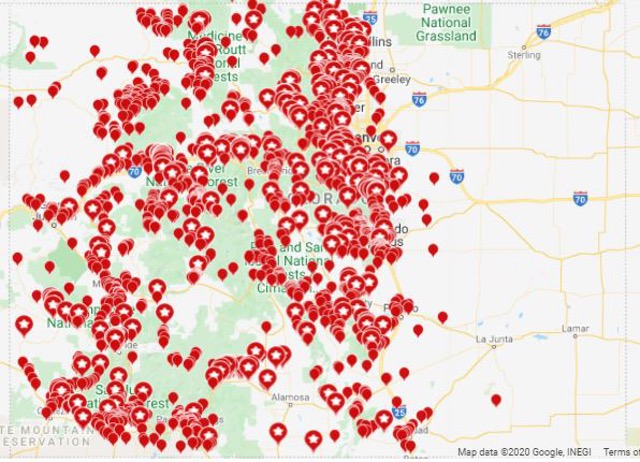Colorado Parks and Wildlife received 3,644 bear reports from April 1 through August 31, down slightly from the 3,855 over the same timeframe the previous year. However, that number is expected to grow rapidly as bears are now in hyperphagia, the period when bruins are preparing for hibernation and spend up to 20 hours a day on the hunt for 20,000 or more daily calories.

Most of the reports involve bears trying to access human food sources and as we enter this fall period of hyper bruin activity, CPW is calling on residents to remove attractants to reduce conflicts and keep you and the bears safe.
“As fall approaches, people can think of bears as basically a four-legged walking stomach,” said District Wildlife Manager (DWM) Joe Nicholson out of the Evergreen district. “They are biologically driven to pack on calories in preparation for winter and they spend increasing time looking for the most efficient way to do so. Residents must realize it is their responsibility to secure their trash, remove other food attractants such as bird feeders, and protect backyard livestock with appropriate electric fencing to avoid conflicts that arise from attracting bears to homes.”
CPW promotes Bear Aware principles all year long, aiming to minimize interactions that put both humans and bears at risk. Being “Bear Aware” includes easy-to-execute behaviors such as securing trash cans and dumpsters, removing bird feeders, closing garages, cleaning and locking your car and house doors and calling CPW when bears become a nuisance.
Drought conditions and other factors that may influence the availability of natural food crops for bears varies across the state, as does the behavior of people when it relates to human-bear interactions. Those all play a role in the bear activity that we see annually. Below is a localized perspective on current bear activity across the state.
Area 15 – Durango
“In our area, unsecured trash and bird feeders continue to be the most common attractants. We have also had more reports of bears entering buildings looking for food. As bears try to put on more weight before winter, it is critical that people take precautions to remove attractants and secure their properties.” ~ Matt Thorpe, Area 15 Wildlife Manager
Area 17 – San Luis Valley
“The San Luis Valley, like the rest of southwest Colorado, is experiencing exceptional drought conditions. Coupled with a late frost, the bear conflicts are up this year across the valley, with bears showing up in places that residents normally don’t see bears. They aren’t ‘bear aware’ and bears are finding food rewards in these areas. Multiple orphan/abandoned cubs have been reported and DWM’s have caught several of those, and relayed to Frisco Creek. Mountain towns that normally have a bear or two each summer have seen large increases in conflicts as well. With little monsoonal rain, the poor conditions will most likely persist into the fall.” ~ Jeremy Gallegos, District Wildlife Manager in South Fork, Area 17
Area 18 – Montrose, Delta, Mesa, Ouray and San Miguel Counties
“The acorns on the scrub oak have come on very strong in the last couple of weeks and our phones have stopped ringing. A late spring frost killed some berry crops and there was some bear activity in June and July, but not as much as in some past years. The acorn crop will sustain most bears well into the fall,” said Matt Ortgea, acting area wildlife manager for Area 18. He also said that bears are finding plenty of food in stands of juniper and pinion tress. Those trees are showing good crops of berries and nuts.”
Colorado Parks and Wildlife offers a reminder that by taking some simple precautions, you can avoid human/wildlife conflicts and help to keep bears wild. Here are helpful tips to prevent conflicts:
- Use a bear-resistant trash can or dumpster; available from your trash hauler or on the Internet.
- If you don’t have secure storage, put items that might become smelly into the freezer until trash day.
- Don’t leave pet food or stock feed outside.
- Bird feeders are a major source of bear/human conflicts. Attract birds naturally with flowers and water baths. Do not hang bird feeders from April 15 to November 15. If you must have bird feeders: clean up beneath them every day, bring them in at night, and hang them high so that they’re completely inaccessible to bears.
- Allow grills to burn for a couple of minutes after cooking to burn off grease and to eliminate odors. Clean the grill after each use.
- Keep garage doors closed. Lock your doors when you’re away from home and at night.Do not keep food in your vehicle; roll up windows and lock the doors of your vehicles.
- Talk to your neighbors and kids about being bear aware.
For more information go to the Living with Wildlife section on the Colorado Parks and Wildlife website.
